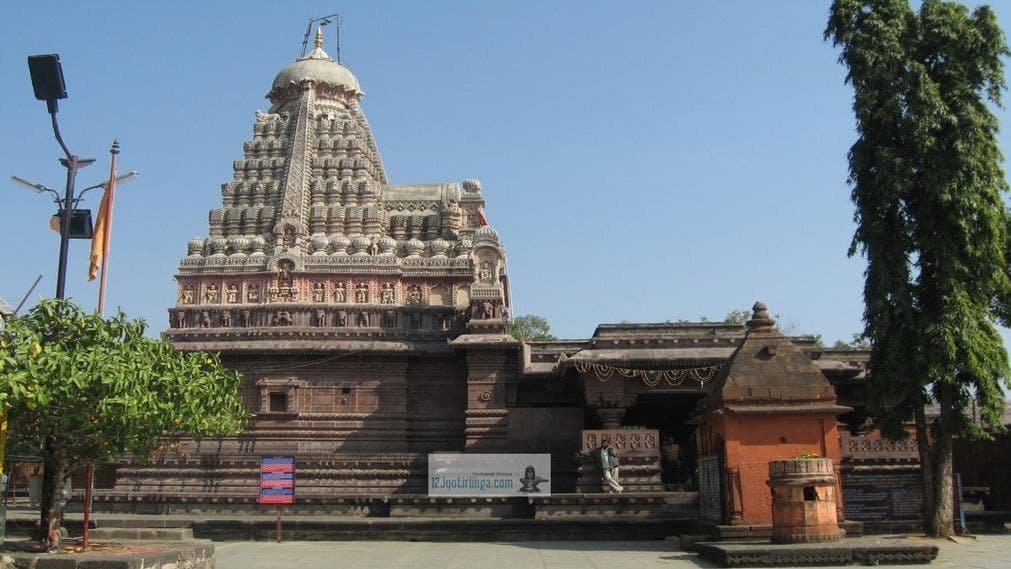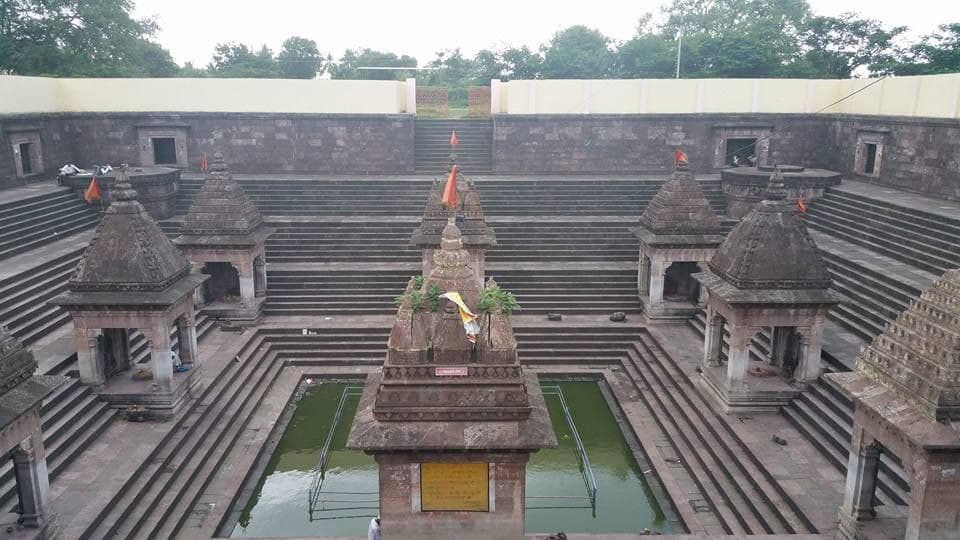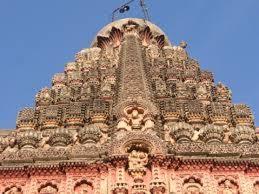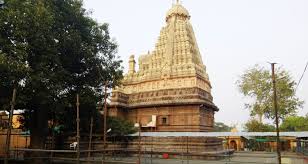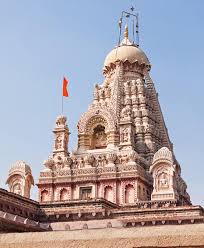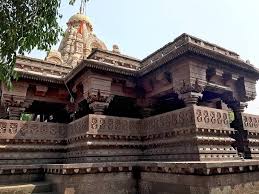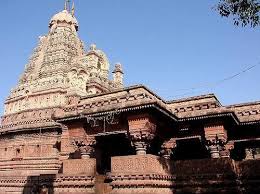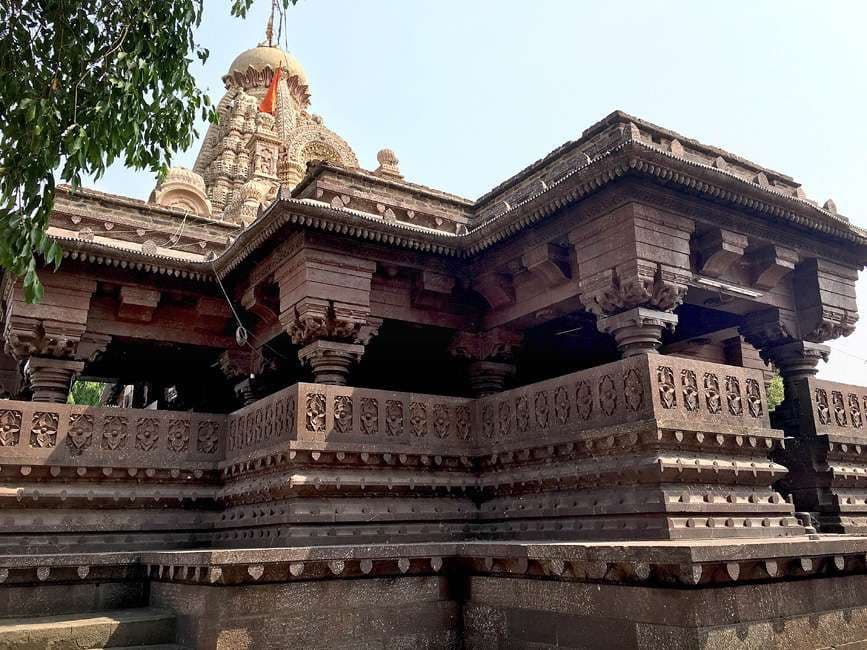Grishneshwar Temple sometimes referred to as the Ghrneshwar or Dhushmeshwar Temple, is one of the shrines dedicated to Lord Shiva that is referenced in the Shiva Purana. The word Ghrneshwara means “lord of compassion”.
Grishneshwar Temple, Aurangabad Information
| Location | Verul, Aurangabad District |
| Also Known as | Ghrneshwar, Dhushmeshwar Temple, and Grishneshwar Jyotirlinga Temple |
| Type | Hindu Temple |
| Status | The 12th Jyotirlinga |
| Dedicated to | Grishneshwar, a manifestation of Lord Shiva |
| Timings | 5:30 am to 11:00 pm every day; 3:00 am to 11:00 pm during the month of Shravan (August-September) |
| Entry Fee | No entry fee |
| Still Cameras, Video Cameras, Mobile Phones | Not allowed inside the temple |
| Distance from Major Transportation Hubs | Aurangabad Airport (41 km); Aurangabad Railway Station (34 km) |
| Origins of the Temple | Before the 13th century |
| Current Structure Constructed in | 18th century |
| Current Structure Constructed by | Rani Ahilyabai Holkar of Indore |
| Architectural Style | South Indian temple architecture |
| Material Used | Red rocks |
| Transportation Options | MSRTC buses plying between Aurangabad and Ellora and private taxis |
The temple is an important pilgrimage site in the Shaiva tradition of Hinduism, which considers it as the last or twelfth Jyotirlinga (linga of light). This pilgrimage site is located in Ellora (also called Verul), less than a kilometer from Ellora Caves – a UNESCO World Heritage site. It is about 30 kilometers (19 miles) northwest of the city of Aurangabad, and about 300 kilometers (190 miles) east-northeast from Mumbai.
The temple, which is believed to have been built in the 13th century, was repeatedly destroyed and rebuilt during the reign of the Mughals, and was rebuilt in its present form in the 18th century.
Anyone can enter the temple premises and its inner chambers, but to enter the sanctum sanctorum core (garbha-ghrya) of the temple, the local Hindu tradition demands that men must go bare-chested.
Architecture
The Grishneswar temple is an illustration of the Maratha temple’s architectural style and structure. The temple, built of red rocks, is composed of a five-tier shikara. The temple was re-constructed by Maloji Bhosale of Verul, (grandfather of Shivaji) in the 16th century and later again by queen Ahilyabai Holkar in the 18th century.
This 240 ft x 185 ft temple is the smallest Jyotirlinga temple in India. Halfway up the temple, Dashavataras of Vishnu is carved in red stone. A court hall is built on 24 pillars. On these pillars, there are carvings summarizing various legends and mythologies of Shiva. The Garbhagriha measures 17 ft x 17 ft. . The temple complex comprises a sanctum sanctorum, which is a square room measuring about 289 square feet, and inner chambers. The Lingamurty faces eastward. There is a Nandi bull in the court hall. Ghrishneshwar Temple is a revered temple, situated in the state of Maharashtra. The temple houses carvings and sculptures of many Hindu gods and goddesses.
Adorning the temple complex is a court hall and a sculpture of Nandi, Lord Shiva’s bull. Carved images of Lord Shiva and Lord Vishnu can also be seen in the temple. The shrine houses the revered Shiva Linga that faces eastward.
Legend / Local stories
–
Things to See in the Grishneshwar Temple Complex, Aurangabad
The temple complex has several attractions that draw the attention of visitors. These include:
- The elaborate temple structure with its intricately designed five-tier shikhara.
- The sacred Shiva Linga, which is one of the 12 Jyotirlingas in India.
- The court hall supported by 24 pillars, each of which is carved with images from mythological stories associated with Lord Shiva.
- The Dashavataras or the ten forms of Vishnu depicted on red stones.
- Sculptures and carvings of several Hindu Gods and Goddesses adorning the temple complex.
Lesser-known Facts about Grishneshwar Temple, Aurangabad
- The term Grishneshwar means the lord of compassion. Shiva is worshipped here as the Lord of Compassion who is believed to take away all the sufferings of his devotees.
- Devotees of Lord Shiva believe that the act of worshipping this Jyotirlinga equals to worshipping all other Jyotirlingas.
- According to the Skand Puran, once Lord Shiva came to this temple after getting upset with Devi Parvati. So, she too came to this temple in the form of a tribal girl to worship the Lord.
- Grishneshwar Temple is one of those very few shrines in India where the Shiva Linga faces the east.
- Devotees regard Shivalay Sarovar, a lake located near the temple, as a holy water body.
- No yajnas or ritual sacrifices are performed in this temple since it represents Agni Tattva, one of the five fundamental forces of nature as per Hinduism.
- Besides the Grishneshwar Temple, there are two more Jyotirlingas in Maharashtra, namely Bhimashankar (near Pune) and Trimbakeshwar (Nashik).
Photo Gallery
How to Reach:
You can take a direct flight/Train from Delhi to Aurangabad. Grishneshwar is 30 km from Aurangabad and local taxi to reach. You can visit Ellora caves and Bhadra Maruti temple which is very close. For Bhimashankar you can again take a private taxi from Aurangabad. It is a 6-hour journey.
By Air
The nearest airport is in Aurangabad, at a distance of around 36 km.
By Train
The nearest railway station is in Aurangabad which is approximately 29 Kms away.
By Road
Ellora Leni and Ghrishneshwar Jyotirlinga Temple is 31 km from Aurangabad and can be visited by State Transport Bus or Private Taxi.
Address
Verul, Maharashtra 431102
Contact Details
Shri Grishneshwar Mandir Devasthan Trust, NH 211, Verul, District Aurangabad, State: Maharashtra, Pin: 431102 India.
Phone: (+91) 02437 244585. Email: [email protected].
FAQs
The Grishneshwar Temple has situated about 30 km from Aurangabad, thus making it a 40-minute drive.

